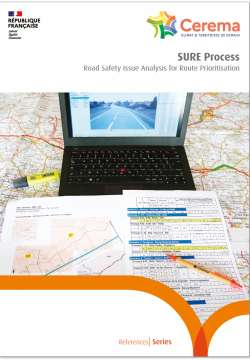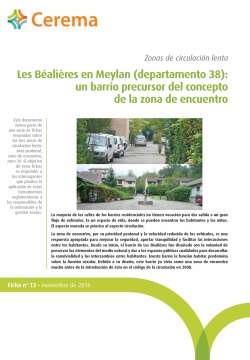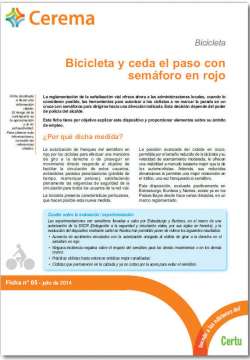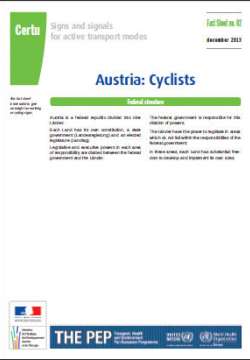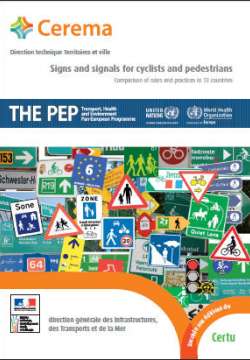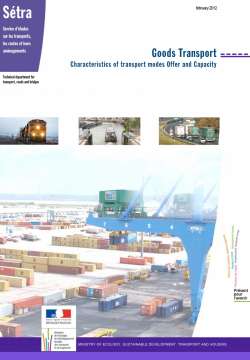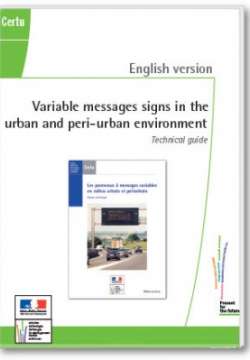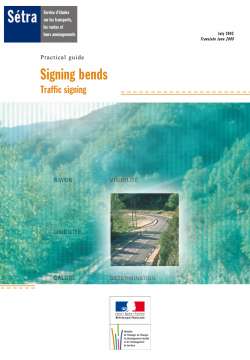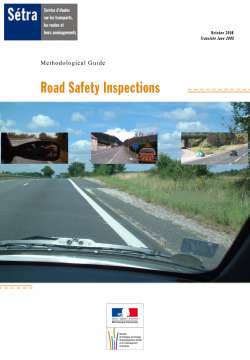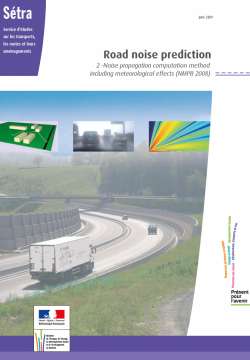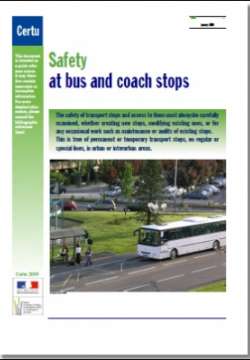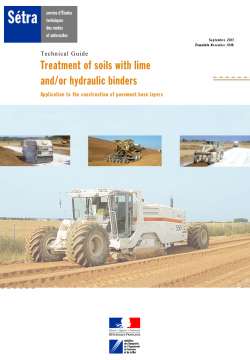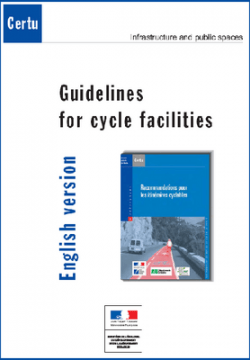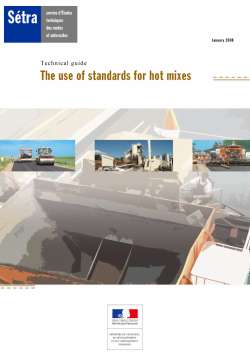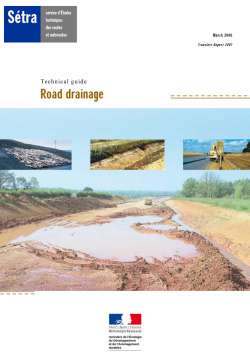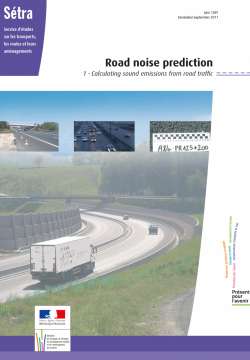
Road noise prediction
1- Calculating sound emissions from road traffic
The previous guide to predicting noise emissions from road traffic dates back to 1980. The numbers of cars, the road surfaces and the methods of assessing sound emissions have all changed. It was therefore essential to produce a new guide to calculating emissions.
This is the purpose of this document.
The previous guide to predicting noise emissions from road traffic dates back to 1980. The numbers of cars, the road surfaces and the methods of assessing sound emissions have all changed. It was therefore essential to produce a new guide to calculating emissions.This is the purpose of this document.
The sound level calculation thus obtained is necessary for the subsequent prediction of far away sound levels by taking account of the effects of the ground and of meteorology on the propagation. This is the purpose of another guide entitled «Road noise prediction - NMPB 2008 - Noise propagation computation method including meteorological effects».
The tools thus obtained are ideal for road project impact studies, checking compliance with regulations or an acoustic objective set by the road authority and road design of acoustic protections.
Following a summary of a few definitions specific to acoustics (definition of physical magnitudes, characteristic traffic magnitudes, presentation of work hypotheses, etc.), the guide studies the two components of emitted noise. The emission is in fact broken down into two components : one component due to the so-called «driving» noise caused by the contact between tyre and roadway, and an «engine» component.
The guide breaks new ground by taking into account the surfacing category and its age when calculating the «driving» noise.
The first part of the guide describes the method (approach and formulae). The second part presents the related issues, the bases for formulae or values used and their limitations and
compares the two guides (the 1980 guide and the 2008 guide).
- Introduction
- Factual method
- Comments and analyses
- Bibliography
A- Notations and symb ols
B- Form
C- Daily traffic profiles on intercity roads and motorways
D- Vehicle sound emission values
E- Graphic results


